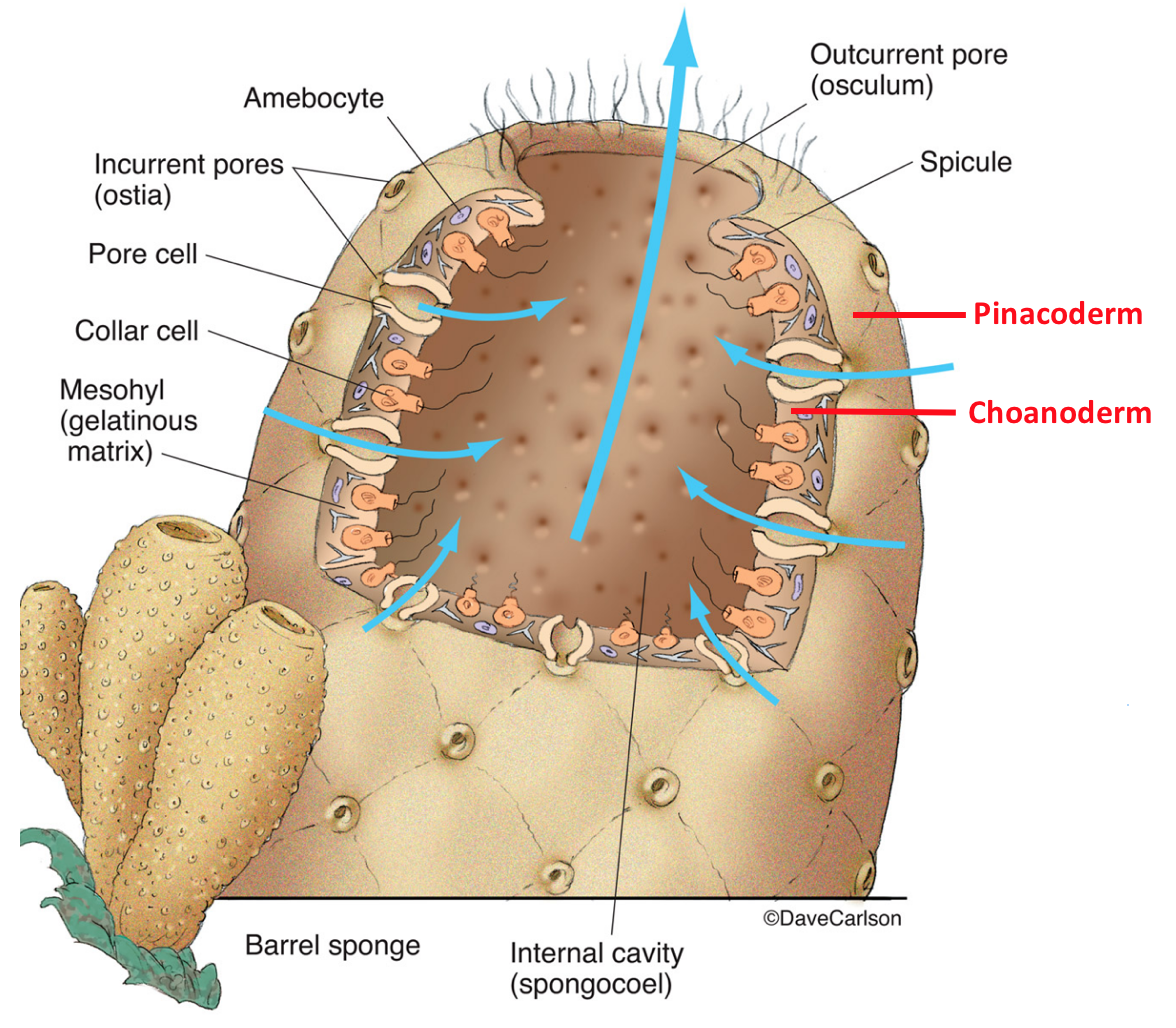The sponge is considered the oldest animal phyla. They are multicellular, but have no tissues or organs. The name Polyfera means "pore bearer" in Latin. The surface of the body of the sponge is covered with 1 cell thick skin. Most sponges are detritivores, meaning that they eat debris particles of organic matter and fine life forms that are filtered from marine water. They get food from the flow of water through the body and symbiotic algae. Coordination (a) Coordination by external factors: The sponge does not have nerve cells to regulate the function of the body. In most cases, individual cells respond to stimuli. For example, light suppresses the contraction of the porosite and other cells that surround the mouth. It keeps the current canal open. Sponges allow water to pass through their bodies in a process known as filter feeding. Water is drawn into the sponge through a small hole called the inflow hole. The sponge uses many collar cells to generate an electric current that draws water into the pores. Each cell has a whip-like structure called the flagella and collar.
quora.com Изображение: quora.com They found that the sponge had no stomach and had a unique organ called "gastric skin" in the gastrovascular cavity. .. The sponge is very simple. A plant that absorbs and retains water.
Do sponges have tissues or organs?
Because it is so simple, it has no tissues or organs, but it has special cells that perform certain functions such as protection, generation of water flow, and decomposition of pathogens. Sponges are one of the first animals to evolve and are believed to belong to the phylum of animals known as Porifera.
How do sponges get food?
The sponge catches and eats food. And unlike plants, they do not have the ability to make their own food. But rather they capture small microbes and plants from the water they live in.
How does the sponge regulate body function?
(a) Adjustment by external factors: The sponge does not have nerve cells to regulate body function. In most cases, individual cells respond to stimuli. For example, light suppresses the contraction of the porosite and other cells that surround the mouth. Keep the current canal open.
How does a sponge filter water?
As water flows through the pores, the sponge filters small organics, bacteria, phytoplankton, and protozoa from the water. Some deep-sea sponges have evolved carnivorous feeding strategies to capture small crustaceans using hook-shaped structures. A collection of various sponge species is known as "threes".
What kind of organs does the sponge have?
Sponges are rare animals in that they lack clear organs to perform various functions. The most important structure is a canal and chamber system called the water flow system, through which water circulates and carries food and oxygen to the sponge.
What kind of organ and body system does the sponge have?
& gt;Since the sponge has no organ system, it has no respiratory or circulatory system. They diffuse from the water flowing through the body to get oxygen and then diffuse into the same puddle to expel waste products.
Does the sponge have any special organs?
Unlike protozoa, sponges are multicellular. However, unlike higher metazoans, the cells that make up the sponge are not organized into tissues. Therefore, the sponge lacks true tissue and organs. Moreover, they have no body symmetry. Sponges, however, have special cells that perform specific functions.
Which organ is missing in the sponge?
Internally, there are no brains, stomachs or other organs. This is because the sponge evolved much faster than other animals. In fact, sponges don't even have true tissue. Instead, their bodies are made up of specialized cells (tissues at the cellular level) that do specific tasks.

Below you will find two helpful answers on a similar topic. 👇
What was Picasso's first painting style?How much is Picasso's most famous painting?
